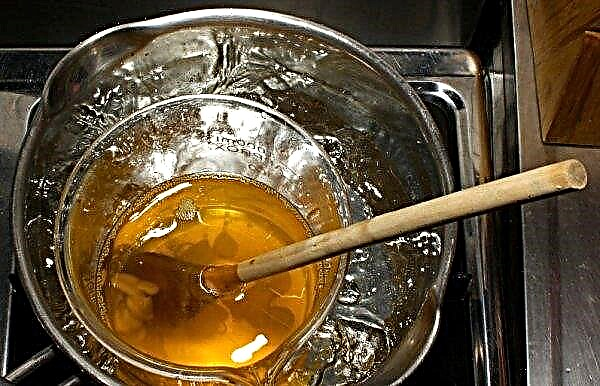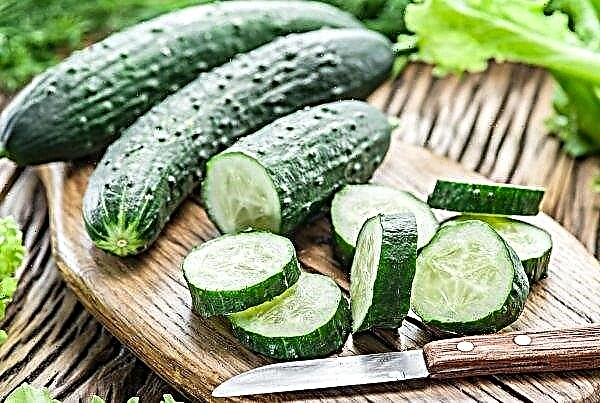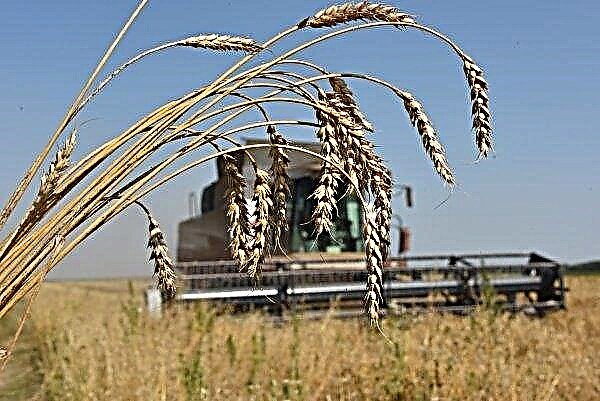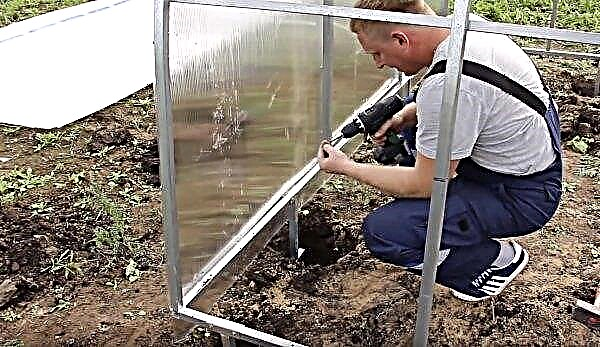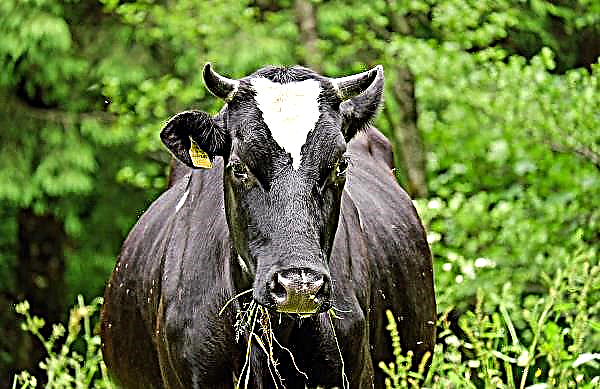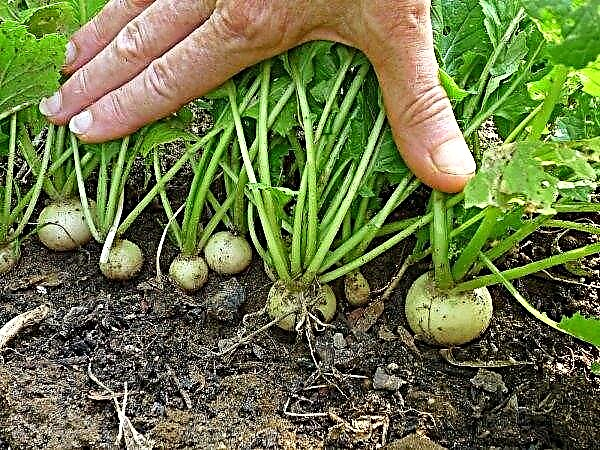Blue spruce trees are the most beautiful graceful trees, the beautiful appearance of which, and especially the color of their needles, few people can leave indifferent. Such an original and attractive color caused the use of wild-growing spruces for cultivating cultivars, one of which is blue, or spiny Blue Diamond spruce (Picea pungens Blue Diamond), or Blue Diamond.
History and description of the variety
Blue Diamond dates back to 1990. It was then that in the nursery of the city of Deurn (Netherlands), local breeders, taking as a basis the prickly spruce Glauka and a number of seedlings, originally from the slopes of the Colorado Mountains, bred a new variety.
All sorts of analyzes, tests and checks took another fifteen years. During this time, it was possible to fully study the features of the new variety, learn about all the "pitfalls" associated with it. And in 2005, Blue Diamond spruce aggregators received an international patent for it (No. PP 19.550).
Important! Blue Diamond spruce is an acidophilus plant: it does not like alkaline calcium soils, preferring a slightly acidic soil, pH 5.0–6.5.
In 2006, the seedlings of the variety became available for purchase on the open market, and since then have enjoyed continued success on both sides of the Atlantic. Its appearance is very similar to the Christmas trees that are depicted on postcards. The fluffy beauty looks truly fabulous.
Among the characteristic features of Blue Diamond are the following:
- lush dense branches grow symmetrically, forming a kind of tiers of a fairly regular shape;
- sharp thin needles of a beautiful turquoise hue;
- elongated cones of intense chocolate color;
- the tree well and confidently maintains the pyramidal shape of the crown throughout life, but this does not mean that it does not need pruning at all.

Annual growth, in the first decade after planting, is approximately 10 cm. By the end of this period, the height of the tree approaches 1.6 m. From about the 11th year of life, the spruce begins to grow more intensively: its crown grows in diameter to 3 m, and the height of the trunk reaches 6 m.
Use in landscape design
Naturally, a tree with such unique external data and exceptional decorative qualities could not go unnoticed by landscape designers. Such a fluffy beauty is capable of creating a New Year mood in any garden even in summer.
Blue Diamond can both solo and look great in group landings. The tree looks great in combination with other conifers: cypresses, thuja, pine trees. Moreover, it is combined both with plants of higher growth, and with those that are lower.
Such a spruce can itself act as the central object of the composition, or vice versa, in the ring of its brethren, surround a higher conifer, for example, a classic pine of venerable age.
The practice of using fir trees of this variety to create borders, outline the site, a kind of hedge. Another application for landscape design is growing these trees, especially those under the age of ten, in tubs. In this form, the tree can be used as a Christmas or New Year tree, simply setting the tub in the right place and dressing the fluffy beauty with decorations.
Step-by-step landing instructions
You can plant a spruce in various ways: seeds, seedlings, cuttings. Each of them has its own characteristics, advantages and disadvantages. Details about each technique will be described below. In the meantime, a few words about how to choose a place for planting a tree.
The best soil for Blue Diamond is loam with good moisture permeability, and at the same time it is constantly in a slightly moistened state. This combination is achieved through properly organized drainage.
Important! The place should be well lit in direct sunlight, the plant is not afraid of drought.
Blue Diamond loves moist soil; however, dense soil and stagnation of water in the root system can have a very negative effect on the condition of the tree. So care should be taken to create a harmonious, balanced combination of light moisture and moisture permeability, which is achieved by equipping proper drainage.
Seeds
Among the advantages of growing conifers with this method, it should be noted that these plants are born strong, strong, with very high winter hardiness characteristics. But there are also disadvantages: a young plant may not inherit the generic traits, and it will take at least 3-4 years to grow it.
To plant a plant using seeds, in winter it is necessary to collect its cones. They are put in a warm place, and after they open, they take out the seeds. These seeds must be stratified. To do this, they are placed in a container with sand, which is left on the street, sprinkled with snow, until spring. You can leave the planting material in the refrigerator.
In early spring, it is necessary to prepare a place for landing, although this can be done in the fall. The landing area should be dug up, all weeds and organic residues removed from it, large clods of land should be broken up.
Did you know? The structure of spruce wood is great for making musical instruments, with excellent sound. This feature of the material could not go unnoticed by the great Italian violin masters who used it to make the top deck of bow instruments.
If your site has fertile land, then when digging, you can simply bring in one bucket of sand and peat per square meter. If the soil is sparse, then another bucket of humus is brought into the same area.
 Before planting, seeds should be treated with a solution of potassium permanganate (1%), and then placed in a heteroauxin solution for 12 hours.
Before planting, seeds should be treated with a solution of potassium permanganate (1%), and then placed in a heteroauxin solution for 12 hours.
The process of planting further seed care is quite simple:
- On the landing site, grooves are made with a depth of 1.5–2 cm. Seeds are planted in these grooves, an approximate norm of 2 g per 1 m.
- Furrows must be covered with pine sawdust, and on top with a thin layer of the substrate prepared for planting.
- In the next 20–25 days, the soil must be regularly moistened, however, this should not be done excessively. Your task is to maintain the soil in a state of constant light moistening.
- After the shoots appear, they are thinned out, leaving the strongest. When the seedlings reach a 5-centimeter height, they are dived, leaving a distance of 10 cm between them.
- When the young shoots rise to a height of 8-10 cm, it is transplanted to a new place. To do this, dig holes, the distance between which is 25 cm, and fill the bottom with drainage. The seedling is set in a hole and covered with soil with the addition of ammonium nitrate.
- In the third year of life, the trees are re-planted, maintaining a distance of 1 m between them.
Video: How to grow a blue spruce from a cone
Cuttings
This method is much simpler and faster than planting seeds. However, plants obtained in this way are less resistant to frost and health. But in this variety the supply of these qualities is so great that they are more than enough for a Christmas tree grown by cuttings.
The following is a detailed description of the vegetative method of propagation:
- In April, break off a twig from the top of an adult tree. It must be broken off, not cut off, otherwise the stalk may not take root. The place of breakage on the mother branch must be treated with fungicide (copper or iron sulfate, potassium permanganate solution) and glossed over with garden var.
- The stem at the site of the break should also be treated with a solution of potassium permanganate, and then remove the bark and needles from the bottom of the branch. The cuttings below should be completely white, peeled of bark and needles. It must be placed in a solution of a growth stimulant (“Heteroauxin”, succinic acid, “Epin”, etc.).
- After a day, the cuttings are planted on the prepared site in advance. The substrate on the site should consist of peat, sand and humus, taken in equal parts. If the soil does not conduct moisture well, it is necessary to build a pillow of sand, or make drainage of pebbles and expanded clay. Previously, the soil is shed with boiling water with potassium permanganate, give it a little dry.
- 4-5 cm deep holes are made on the soil surface with a stick. The distance between two adjacent holes is 25 cm. Cuttings are placed in these holes so that only the cleaned part of the twig is in the ground. The soil around is tamped, planted watered and covered with garden film.
- Seedlings need to be moistened periodically, and from time to time to remove a film. First, the shelter is removed for 10 minutes daily, gradually increasing the airing time.
- With the onset of autumn, with the advent of cold weather, the soil around the young shoots is mulched. For this, it is best to use pine sawdust and peat. In addition, by this time it will already be visible which cuttings have not taken root - they need to be removed.
- In the spring, the grafted cuttings are transplanted into a permanent place.
Video: Propagation of spruce by cuttings
Seedlings
This is the fastest and easiest way to land. In fact, you get an already proven healthy tree that just needs to be buried in a suitable place.Varietal spruce seedlings are best purchased from nurseries or from trusted growers. Usually in such places, plants adapted to local conditions are sold, with almost 100% germination.
The landing algorithm for such a tree is extremely simple:
- Prepare a landing pit 1 m wide and 70–80 cm deep. The bottom of the pit should be covered with a 15 cm thick drainage layer consisting of a mixture of expanded clay, river sand and broken brick.
- On the drainage, place a 20-cm layer of soil mixture prepared from equal parts of peat, humus and sod land, with the addition of 2 tbsp. l ammonium nitrate per 1 bucket of the mixture.
- Remove the seedling from the pot and place it in the center of the pit. Control the planting depth so that the root collar is 4-6 cm above the ground. Correctly positioning the neck of the root is extremely important: if it is completely in the ground, it will most likely begin to rot, which will lead to the death of the tree. If the neck is located much higher than the ground level, then it can dry out, which is also bad.
- Fill the pit with soil mixture and compact it, then pour plenty of water. While the tree does not take root, it needs a slight shading.

Care
If you want the tree to grow into a real fluffy beauty, the first time she will have to pay a lot of attention. But your work will be rewarded when, after a few years, the wonderful Blue Diamond appears in all its glory on the infield.
Did you know? In a forest fire, incandescent cones of pines, spruce, fir, shoot seeds at a distance of up to 45 meters. Such explosions are one way of propagating conifers, but a side effect of these shots is the spread of fire in the forest.
Watering and feeding
During the first year of life, it is necessary to moisten the soil and crown several times a day. Watering the soil around the tree and spraying its crowns from the spray gun is performed in the morning and in the evening. It is better to water the stem circle from a watering can by sprinkling with warm, settled water. You will need to make sure that the soil is constantly in a slightly wet state, but at the same time the moisture in the root area does not stagnate.
Watering in the summer is especially important, while the tree has not yet turned one year old and it has not yet matured sufficiently.As for top dressing, it should be said that Blue Diamond reacts to them very well, and for a beautiful appearance (for the sake of which, in fact, these spruces are grown), fertilizing is simply necessary. If during the transplant you fertilized the plant, the next top dressing is introduced only after a year, not earlier.
Important! Spruce does not need nitrogen to the extent that hardwood needs this mineral. It is introduced only until the end of June - later feeding with this mineral stimulates the growth of young shoots, which can lead to their freezing.
The fertilizer application is as follows:
- In March, before the sap flow begins, 1 tbsp. nitroammophoski. From April to July, the plant is fed with universal fertilizers such as Aquarin, MicroMix, Green Needle, etc., according to the instructions.
- Universal top dressing is used about once every 3 weeks. The drug "Kemira-universal" (3 tablespoons per 1 m²) has proven itself well.
- Nitrogen fertilizers (nitrate form) are introduced only until the end of June, after which the emphasis is on potassium and magnesium, a little less attention is paid to phosphorus.
- In late summer - early autumn, spruce is fed only with magnesia (1 tbsp. Per 1 plant). You can use potassium salt or nitrate, in the same volume. During this time (August - September) perform one top dressing.
- For color and strength, needles once a season, in the middle of summer, contribute 1 tbsp. magnesium sulfate per 1 m² area.

As for organic fertilizers: every 2 years, in March, the trees can be fed with a solution of rotted manure or poultry manure.
Trimming and processing
Blue Diamond is distinguished by an almost absolutely regular crown shape. When creating the necessary conditions, the tree grows in such a way that it almost does not need forming pruning.
But the procedure of the sanitary type should be performed in the spring. The plant tolerates frosts quite normally up to -40 ° С, however it is necessary to check the tree in March for the presence of frost-bitten branches. The tree is carefully inspected, with the help of a pruner, all frozen, dry and broken branches are removed. Places of slices are covered with garden var.
Formative pruning is performed if the blue spruce is part of some composition, an element of landscape design - for example, a link in a hedge. This procedure is carried out in the summer, after the formation of shoots ends. a-first year (immediately after planting); b-second year; third year
a-first year (immediately after planting); b-second year; third year
The first time crown formation is performed shortly after planting. This operation is especially effective until the tree has reached the age of 7 years. The procedure should not be done after mid-summer, as the cut branches may not have time to overgrow before the onset of winter frost, which will lead to freezing.
Loosening and weeding
The root system of blue spruce, which is characteristic of all conifers, has a branched surface arrangement. For this reason, loosening should be neat and shallow (5-7 cm). Perform this procedure after each watering, to ensure normal aeration of the roots. In addition, weed should be removed, especially from the root circle.
After loosening and removing weeds, the soil in the near-stem circle is mulched with peat mixed with coniferous sawdust and covered with pine bark on top. Another option is to sow lawn grass around the tree.
Mulching and shelter for the winter
Blue Diamond spruce tolerates frosts, so an adult tree does not need shelter. It is enough to prepare abundant watering in preparation for the winter, to create a certain supply of moisture, and to mulch the soil around the plant. Mulch for the winter needs to be made fresh: mix coniferous sawdust and peat in equal parts and cover the area around the tree with this composition, the layer thickness is 5 cm. Sprinkle softwood bark on top of the mulch.
But the shelter of a young tree should be taken more seriously. If heavy snowfalls are frequent in your region, you need to tie the branches with twine, pulling them to the trunk.This must be done so that snow adhering to the paws does not break them.
You need to mulch a young spruce in the same way as an adult, only with a thicker layer - up to 7 cm. From above, the mulch should be thrown with pine spruce, and in case of frost below -35 ° C, the plant should be covered with a non-woven fiber such as spunbond. In addition, the tree should be covered with agrofibre and with the arrival of spring heat, so that the March sun does not burn young needles.
Diseases and Pests
Blue Diamond is highly resistant to diseases and pests. If all planting and care measures were carried out correctly, top dressing was applied regularly, and you follow preventive measures in your own garden, then the tree will most likely grow healthy and strong.
Did you know? Currently, there are 21 trees on the entire planet whose age is more than 1.5 thousand years. Of all these plants, only sacred ficus belongs to deciduous, all the rest are conifers.
In the event that you did something wrong when performing these operations, there is an insignificant probability of the appearance of bark beetle, barbel. In case of non-compliance or improper implementation of care measures, the occurrence and development of gray rot is possible.
To control pests, “Karbofos” and “Decis” are used, according to the instructions. Drugs are used before the buds begin to bloom.
Gray rot (mold) is difficult to detect at the initial stage of the disease, and when obvious signs appear, most often the tree cannot be saved. It should be uprooted, burned away from the site, carefully remove the remains (needles, bark, parts of the roots) from the garden and cultivate the soil with fungicides (Fundazol, Fitosporin-M, Alirin-B, etc.). 
So, blue spruce Blue Diamond is a beautiful tree that can decorate any private garden, park or city square with its presence. In addition to the remarkable external data and the unique color of the needles, the spruce has another important quality - it easily tolerates the frosts typical of Ukraine and most of Russia, almost to the Arctic Circle.



